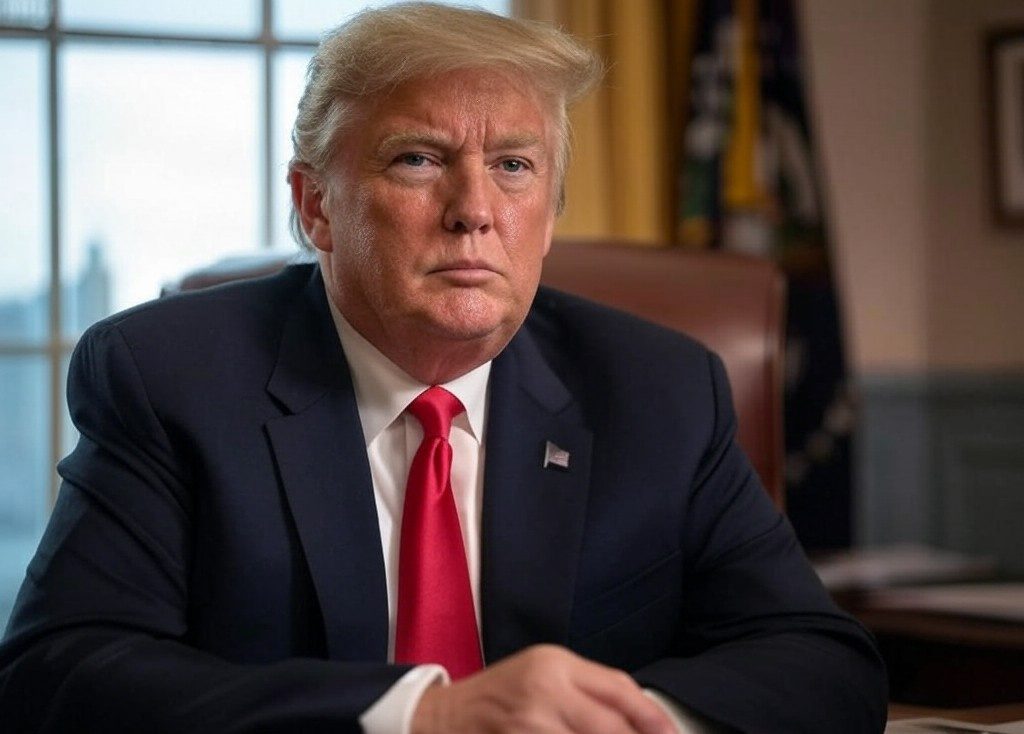Trump Administration’s Bold Move to Restructure Federal Workforce: Buyouts and Beyond
In an unprecedented announcement, the Trump administration declared on Tuesday that it would offer buyouts to all federal employees who choose to leave their jobs by next week. This bold initiative aims to rapidly shrink the size of the U.S. government and reflects President Trump’s longstanding promise to disrupt traditional political norms. A memo from the Office of Personnel Management (OPM) made it clear that this is just the beginning of a sweeping change in the federal workforce.
Understanding the Buyout Offer
The memo sent to millions of federal employees states that those who voluntarily opt to leave their positions will receive an enticing package worth approximately eight months of salary, provided they make their decision by February 6. This move is unprecedented in the history of the federal government, as it opens the door for a significant reduction in the workforce, which currently numbers over 3 million. The average tenure for a federal employee is nearly 12 years, as reported by the Pew Research Center.
The Impact of Buyouts on the Federal Workforce
While the offer of buyouts may seem attractive to some, the implications of such an exodus are difficult to predict. Katie Miller, who sits on an advisory board to the Department of Government Efficiency, noted on X that “This email is being sent to more than TWO MILLION federal employees.” The potential loss of experienced professionals could disrupt essential federal services, from the Veterans Affairs Department to agencies responsible for consumer safety and military procurement.
Concerns Raised by Union Leaders
In response to the announcement, Everett Kelley, president of the American Federation of Government Employees union, voiced concerns that this should not be perceived as voluntary buyouts. Instead, he argued that it serves as a means to pressure dedicated career employees who may not align with the new administration’s agenda to vacate their posts. “Purging the federal government of dedicated career federal employees will have vast, unintended consequences that will cause chaos for the Americans who depend on a functioning federal government,” Kelley stated. He emphasized that this approach creates a toxic environment, making it challenging for workers to remain in their positions.
Trump’s Directive for a Full-Time Workforce
Further details from the OPM memo reveal that President Trump is mandating the return of most federal employees to their physical offices full-time. “The substantial majority of federal employees who have been working remotely since Covid will be required to return to their physical offices five days a week,” it states. This directive aligns with Trump’s previous statements, where he insisted, “You have to go to your office and work. Otherwise, you’re not going to have a job.”
Future of the Federal Workforce Under Trump
The memo outlines four key directives that Trump is enforcing for the federal workforce moving forward. These include:
- Requiring full-time office attendance for the majority of employees
- Insisting on excellence at every level of the government
- Implementing enhanced standards of suitability and conduct for employees
- Encouraging agencies to downsize where necessary
Such changes could mean a significant reshaping of the federal workforce, as Trump’s administration seems intent on ensuring that the government is staffed with “reliable, loyal, trustworthy” individuals who strive for excellence in their daily work. The memo also includes a “deferred resignation letter” for employees who choose to accept the buyout, retaining their pay and benefits until September 30.
Reclassifying Federal Employees
In a move that could further alter the landscape of federal employment, the Trump administration is revisiting an executive order known as “Schedule Career/Policy,” which aims to replace the previously rescinded Schedule F order. This new directive is part of a concerted effort to reclassify federal employees and shift them toward political appointees, thereby stripping them of job security protections.
While President Joe Biden’s administration sought to protect federal employees by nullifying the Schedule F order and implementing regulations to secure their positions, Trump’s administration appears committed to reversing these measures. On Monday, the OPM set deadlines for agencies to recommend employees for reclassification, emphasizing rapid implementation.
The Broader Implications of Downsizing
The potential fallout from these initiatives is vast and complex. A mass exodus of federal employees could lead to significant disruptions in critical public services, impacting everything from healthcare delivery to economic stability. The government plays a crucial role in regulating various sectors, and losing experienced professionals could compromise the efficacy of these operations.
Public Sentiment and Future Prospects
The public sentiment surrounding these changes is mixed. While some Americans may support the idea of a leaner government, there is a growing awareness of the risks associated with downsizing without careful consideration of the ramifications. Many federal employees and unions are voicing their concerns about the long-term effects on service delivery and employee morale.
Conclusion
The Trump administration’s recent actions to offer buyouts to federal employees signal a significant shift in the federal workforce landscape. As the administration seeks to reshape government operations, the potential consequences for public services and employee morale cannot be overlooked. With the looming threat of further downsizing and the return to full-time office work, the federal workforce stands at a crossroads. The decisions made in the coming weeks and months will undoubtedly shape the future of government operations and the delivery of essential services to the American public.











